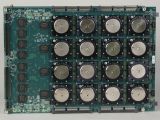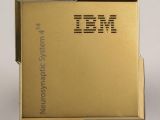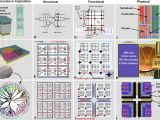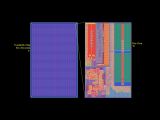Artificial intelligence is something that has been depicted in various ways in science fiction, but everything mostly boils down to whether or not AIs will turn on us. Researchers from IBM, Cornell Tech, and collaborators have decided to shelve that issue for now.
Apparently, they figured it was too early to worry about this problem, even now. Also, though they didn't say it, it's not like the world will ever rule against artificial intelligence research. There is still some time to go before the issue of sentience can crop up.
Anyway, the team of scientists whose work we are about to check out did not worry about this yet. Instead, they decided to create a chip that could, one day, run such AIs.
The result was the TrueNorth processor, which is based on the human brain, which is why it is called a neurosynaptic chip.
The cerebral cortex, specifically the right side of the brain, was mimicked. The part of the brain that processes sights, smells, and other information from the environment.
This information is used to essentially learn how to respond in different situations. Basically, instead of people actually writing down code to define a “personality” and way to interact with the world, they mean to allow AIs, or rather the computers running them, to learn it on their own.
It's like human children learn, bit by bit, how to function in society, to interact with their peers and every inanimate object in sight.
Self-driving cars, smartphones with true artificial intelligence, sentient robots, all these things are supposed to be possible now, thanks to the neurosynaptic chip. As you may have guessed, the new processor is a really big deal.
The need for a totally new chip design has been apparent for years now. After all, today's computers, all of them, are basically the same things as the number-crunching machines of the 1940s, only a lot better and faster at it.
IBM's TrueNorth can do a lot more things, and differently, through its huge network of “neurons” and “synapses,” or whatever passes for them. There are one million programmable “neurons” in the TrueNorth, with 256 million programmable synapses interlinking them. In total, they make for 4,096 cores and 5.4 billion transistors.
All the while, the processor does not need more energy that what could be provided by a tiny, hearing-aid battery, or one of those little batteries used by watches and small toys.
TrueNorth is a very big advancement in the field of processing and technology as a whole, with 46 billion to 400 billion “synaptic” calculations per second per watt of energy, which is the same as the 4.5 billion “floating point” calculations per second and per watt performed by the most efficient supercomputer. Not bad for a processor made on Samsung's 28nm technology.
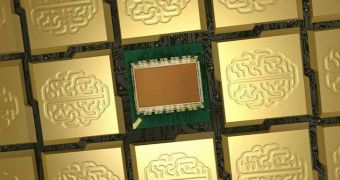
 14 DAY TRIAL //
14 DAY TRIAL // 
